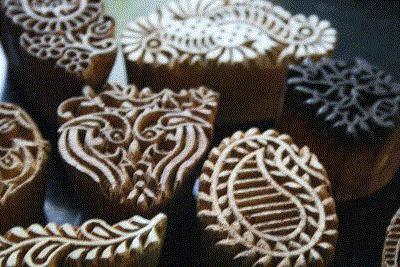
Art of Hand Block Printing
- Aug 02, 2017
- 0
The traditional process of hand block printing on textiles, with rich natural colors, has been practiced in Rajasthan for around 500 years. Block printing was introduced to the Jaipur region of Rajasthan by the Chhipa community. This community was originally located in Bagru Village, an area now famous for its vegetable dye and mud resist (dabu) block prints. The art of block printing has been passed down for generations within families and communities and has branched out in recent decades to other regions such as Sanganer, just South of Jaipur. In traditional Bagru style block printing, the ‘recipes’ for the traditional plant-based dyes are developed within each family and kept alive from generation to generation. The colors are dependent on the quality of the plants, the water and skill and knowledge of the printing masters. In more recent forms of block printing, such as those practiced in Sanganer, colors are mixed using AZO free pigment dyes.
PROCESS Block Carving
A print starts with the design, drawn on paper and carved into the Sheesham wood block. Designs are meticulously carved by hand into the blocks which are approximately 18-25 cm across. The physical block is the design for a single repeat which is then stamped in rows across the fabric. Each color in the design is carved into a separate block. The outline block or 'rekh', is the most intricate and usually stamped first; it is typically the outline for a floral or lattice type design. Next comes the fill block or 'datta' and possibly the ground color block or 'gud' depending on the color scheme used. Block carving is in itself an art requiring years of apprenticeship to gain mastery and is done entirely by hand.
COLOR MIXING Preparing the Dyes
Once the blocks are carved, the master printer prepares the colors which will be used in printing. The colors are then poured into wooden trays and the blocks stamped in the color each time, then stamped onto the fabric to form the repeat pattern. The colors shown are AZO free, eco-friendly synthetic colors which are used in Sanganer printing.

|
 |
Printing Process
Each color pattern is stamped individually onto the fabric; the process takes skill and time, as the pattern must be stamped repeatedly across the fabric, color by color. The slight human irregularities — inevitable in handwork — create the artistic effect emblematic of block prints. The final outcome of this intricate labor is a timeless beauty, and every garment made from this fabric is unique.




